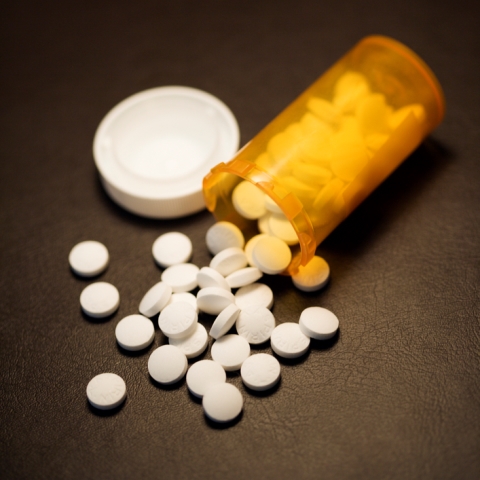By Dr. Janice Mann
Opioids are a class of drugs that are prescribed to treat pain, and include codeine, fentanyl, oxycodone (one of the ingredients in Percocet), and morphine. But opioids aren’t always taken to treat pain. Taking opioids can also result in a feeling of euphoria or a “high.”
Opioid use disorder (also known as opioid dependence or drug addiction) is a condition in which people have difficulty controlling their use of opioids. They take opioids because of cravings for the drug and its effects, and to avoid or stop the withdrawal symptoms they experience if they don’t take them. People with opioid use disorder develop a tolerance, meaning higher and higher doses of opioids are needed to feel their effects and to avoid symptoms of withdrawal. People with opioid use disorder will continue to use opioids instead of engaging in other pleasures or interests and despite harm to themselves and others.
When thinking about opioid addiction, you might assume that the opioids being taken are illegal drugs (sometimes referred to as illicit or street drugs) such as heroin. But opioids that have been prescribed to patients for pain also play a significant role. Patients who have been prescribed opioids may develop opioid use disorder themselves or the opioids they have been prescribed can be diverted into the hands of others.
Opioid addiction is a complicated disorder – with physiological, psychological, genetic, behavioural, and environmental factors all playing a role. This makes effectively treating people with opioid use disorder a real challenge. But oddly enough, one treatment strategy for opioid use disorder involves the use of…opioids!
In Canada, there are two such medications approved for the treatment of opioid disorder. One is methadone. Another is a combination of two medications: buprenorphine and naloxone. When taken as prescribed, these medications can alleviate withdrawal symptoms and reduce cravings but without producing a feeling of euphoria or a “high.” They can be used first to manage opioid withdrawal in patients and then can be used long term to prevent relapse.
There are differences between methadone and buprenorphine/naloxone. Methadone is a liquid taken combined with another liquid that can’t be injected. It can be prescribed only by a physician with a special exemption under the Controlled Drugs and Substances Act. Buprenorphine/naloxone is a tablet taken under the tongue. Physicians do not require a special exemption to prescribe it.
Because of how the two medications work in the body, the potential for abuse is lower for buprenorphine/naloxone and the risk of overdose is higher for methadone. Methadone needs to be taken every day, but buprenorphine can be taken every other day.
Before 2013, buprenorphine/naloxone was significantly more costly than methadone, but it’s now available as a generic drug, making the difference in cost between the two treatments less.
Given the availability of two different prescription drugs to treat opioid use disorder, how do treatment programs, health care providers, and their patients choose the option that is best for them?
To help answer this question, the health care community turned to CADTH — an independent agency that finds, assesses, and summarizes the research on drugs, medical devices, tests, and procedures — for evidence.
CADTH carefully searched the medical literature to find information on how effective the two treatment options are at treating opioid use disorder. Information on whether the treatments offered good value for their cost was also sought. Finally CADTH searched for recommendations from evidence-based clinical practice guidelines to help guide treatment decisions. After pulling together all the evidence found, the report was reviewed by experts in substance use and the treatment of addictions.
And what did CADTH find? One study showed that higher doses of methadone and buprenorphine/naloxone were more effective than lower doses. Patients taking methadone stayed in treatment longer, but patients taking buprenorphine/naloxone were more likely to abstain from using other opioids. There were no differences in harms between the two treatment options. The economic evaluations showed that the costs of buprenorphine/naloxone treatment were higher but the differences were small, and these economic studies were not Canadian and were conducted before buprenorphine/naloxone was available as a generic drug. This means that in Canada buprenorphine/naloxone may now be more cost effective than methadone – but it’s difficult to know for certain. One evidence-based guideline from 2011 recommended that the choice of treatment be guided by individual clinical circumstances and patient preference.
Overall, the evidence shows that buprenorphine/naloxone appears to be a safe, effective, and cost-effective choice for treating opioid use disorder when compared with methadone. This is an important finding, given some of the advantages offered by buprenorphine/naloxone.
So what does the evidence mean for healthcare providers, their patients, and the Canadian health system as a whole? In a nutshell, it offers a choice in treating people with opioid use disorder. This means that each treatment program – and the health providers and patients within that program – can take into consideration the many factors that come into play for a person experiencing opioid use disorder and choose the treatment option that fits best. Effective treatment of opioid use disorder is one of many strategies that will help to address the opioid crisis in Canada.
CADTH is committed to providing the needed evidence to effectively address the opioid crisis in Canada. For more evidence on opioids visit www.cadth.ca/opioids or speak to a CADTH Liaison Officer in your region.
Dr. Janice Mann is a Knowledge Mobilization Officer at CADTH.


